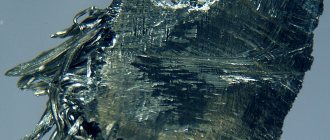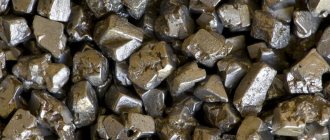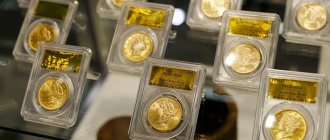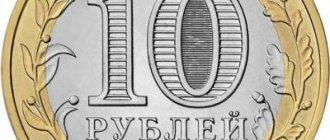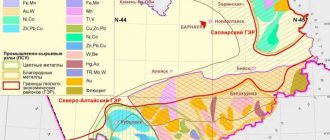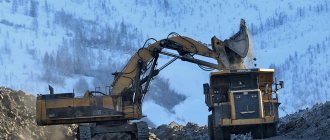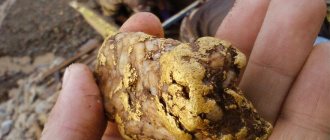Sanarka – Russian Brazil
Sanarka belongs to the Tobol basin. This mountain river in the Chelyabinsk region became widely known in the 19th century for the huge gold reserves that were discovered in it by academician Nikolai Koksharov. It was he who, in his research works, gave the river basin the name “Russian Brazil”. His research contributed to the organization of industrial gold mining in Sanarka. Today, the main reserves of the precious metal there have been “selected” and further industrial development has been recognized as unprofitable, but if you wash gold alone and by hand, you can still make a good living.
Peruvian gold rush
The Peruvian gold rush also developed according to the classic scenario. For centuries, Peru was one of the leading gold-mining countries. Therefore, the gold boom did not come as a surprise here. The rise in the price of gold about a decade ago prompted a large number of Peruvians to quit their usual jobs and retrain as gold miners, despite the dangers that lurk, conflicts with the law and harm to the environment.
A striking example of this is the Amazon region of Madre de Dios, where a gold mine supports 30,000 miners. The legality of presence and work here for 95% of them is highly questionable.
According to Peruvian authorities, about 40% of the country's gold is mined illegally. The monthly earnings of people in the mines range from $3,000 to $5,000 with an average regular salary of no more than $125.
Moreover, the consequences of the gold rush in Peru are similar to those in Brazil. This is an environmental disaster and a thriving crime scene. Collapsing river banks cause floods. In the city of Huape Tuy, the airport is flooded and water continues to spread to the rest of the community. A solution to these problems is not yet in sight in the near future.
Lensky gold-bearing area
The Lena River basin is one of the richest deposits of the precious metal not only in Russia, but also in the world. Gold mining here began in 1844, and over 150 years of artisanal and industrial development, more than one and a half thousand tons of the precious metal were mined. The Lena mines were one of the main sources of replenishment of the USSR treasury. Today, industrial developments have been curtailed in many places because they are not profitable. But it is quite possible to wash gold here privately, which is what many people do. According to the most conservative estimates, its total reserves here are no less than one and a half thousand tons extracted previously.
Bodaibo Gold Mines
Another of the country’s richest gold deposits, located in the area of the river of the same name and its basin, is in the Irkutsk region. Geographically, Bodaibo can be considered part of the Lena gold-bearing region. Over a century and a half of development, more than 620 tons of precious metal were mined there. Work in the Bodaibo basin continues today. The peculiarity of this deposit is the presence of a large number of large grains of sand and nuggets. Therefore, many prospectors rush here - luck can smile on anyone here.
Where to find gold. Places
Gold mining in Orsk district began in the middle of the 19th century, but it developed most at the turn of the 19th and 20th centuries. Work at Aydyrle and the Blue Shikhan mine was carried out using mechanical equipment - steam lifting machines, steam pumps, compressors and hammer drills. The mines were under concessionary jurisdiction of the British, but since 1913 they passed into the ownership of the A.S. company. Antonov and O.P. Vishnevskaya. Since 1914 this . During these years, more than 1,200 people worked in the mines. During the troubled years of the revolution and the Civil War, work at the mines ceased. They were revived only in 1924-25, but they failed to reach the pre-revolutionary level of gold production in Soviet times. Later, most of the mines were declared unprofitable and closed.
As you know, Bashkiria, including the territory of our region, has been famous for its rich mineral resources since pre-revolutionary times and attracted enterprising people from all over Russia. The presence of enormous underground wealth, the rapidly developing mining industry and the urgent need for “knowledgeable leaders” in this industry prompted the ore miner Ismagil Tasimov in 1771 to approach Empress Catherine II with a proposal to open a mining educational institution in Russia. In 1773, such a school was opened in St. Petersburg. For its maintenance, the Bashkir ore miners undertook to contribute half a kopeck (a quarter of a penny) for every pud of ore they supplied. Today it is the famous Mining Institute in the northern capital. This is how, shoulder to shoulder with Russian specialists, the Bashkirs developed the riches of their subsoil. The first Bashkir proletarians also appeared in our area.
Before the October Revolution, the territory of the present Baymaksky district was administratively part of the Verkhneuralsky, and later - the Orsky district of the Orenburg province. And in mining and geological documents this territory was called the Tanalykovo-Baymak mining region, which extends in the southeastern part of the republic along the eastern slope of the Ural ridge, between the Sakmara and Yaik (Ural) rivers on both sides of our Irandyk. Administratively, this ore zone in the northeast belongs to the Abzelilovsky, central - to the Baymaksky, southern - to the Khaibullinsky districts, its area is more than 10,000 sq. km. Certain mineral deposits were known to local residents for a long time; they were mined and used (clay, sand, rubble stone, sandstone, shale) for construction work constantly. Regarding the beginning of the mining of gold and other non-ferrous metals, geologist B. Magadeev writes this: “Even at the turn of the Stone and Bronze Ages, man discovered gold. Among other shiny and brightly colored stones and minerals, our inquisitive ancestor could not help but pay attention to this eternally fresh, never dull, and, moreover, quite malleable when processed and solidly weighty natural metal. Its reddish-yellow color was also pleasing to the eye. Near the village of Kuseevo in our region, the oldest mine in the Urals is known (2nd millennium BC), where gold was mined from a quartz vein. And when asked who worked here, the scientist answers that they were “suksuns” (from the Bashkir word “soksonou” - to dig, to pick). Some primitive stone tools of ancient gold miners were also found there. At the Sultanovsky mine, which is also in the area of this village, pieces of crushed quartz were discovered, and traces of simple scraping of inclusions of metallic gold were established. Among the finds remaining from the gold mining work of ancient people, technical geologist Kh.B. Devyatov, who devoted his entire life to gold mining in our area, writes: “At the Sultanovsky mine... copper or bronze tools were found in the gold-bearing sand - an eye ax , a chisel and two pieces of clay vessel. These things date back to around 1000 BC,” and continuing further: “At the Tanalyk mine of the Gordeevs in the former 1st Burzyan volost of the Orsky district, a copper or bronze dagger and the same sickle were found in unknown conditions, dating back to the beginning of the last millennium BC (The indicated finds were transferred to the Orenburg Museum, inventory No. 11,14) (Devyatov Kh.B., Asanov V.S. Glazunov V.P. historical background on the development of the gold industry in the Tanalyk-Baymak region of the BASSR, 1966) . Another similar ancient working was discovered on the territory of the Burzyansky volost by academician Lepekhin in 1770 during his trip to the Urals. Driving through the Burzyansky volost, he visited the “Peipus Mine”, located 4 km from the village of Kananikolskoye, and another similar ancient working “about twenty versts before reaching the Sakmara River, near the Shirly River, where the mountain ridges consisted of pure white deliberately fatty quartz, its crevices were filled with blackish or bluish matter, which usually appears with gold-containing ores. This niello was conveniently mixed with mercury, the distillation of which undoubtedly left traces of gold...” Based on these arguments, the same geologist B.D. Magadeev believes that ancient people in the Urals learned to mine gold back in the Bronze Age. They washed sand and pebbles along the banks of small mountain streams. This is the only way to explain the presence of large amounts of gold in the ancient Sarmatian mounds in the Southern Urals, which were built around the 1st millennium BC. Ancient Greek historians also noted at one time that huge vulture birds live near the Riphean Mountains (that is, the Ural Mountains), which guard the gold of the Scythians. The Scythian-Sarmatian world was united and at one time extended from the South Ural steppes to the Sea of Azov. Greek travelers sailed to the northern shore of the Black Sea, communicated with nomadic Scythian tribes, reached the Riphean Mountains and saw with their own eyes beautiful items made of pure gold, saddles, bridles, stirrups, and nurses decorated with gold. These products spread to different countries. But gold was not mined in Rus'. Therefore, for a tiny piece of it, furs, barrels of honey, and grain were given in bales. With the development of trade, the popularity of monetary metals, gold and silver also grew. The Russian Tsars Ivan III, Vasily III, Ivan IV the Terrible organized all kinds of expeditions; during the reigns of Fedor, Boris, Mikhail, Alexei and Peter Romanov, the search for gold continued, they were carried out in the Urals, Trans-Urals , Siberia and the North, but all to no avail. To meet the kingdom's needs for mineral raw materials, Peter I in 1719 issued a decree declaring freedom for the extraction of minerals to all classes and on all lands, their smelting and processing. The very first gold deposits were found in 1723 in the Olonets region (Karelia, on the Olonka River). And in the Urals, the discovery of the first gold deposit in literature occurred in 1745, during the reign of the daughter of Peter the Great, Elizaveta Petrovna. It was discovered by Erofey Markov not far from Yekaterinburg along the Berezovka River. In the Orenburg State In the regional archive in 2000, an application dated 1723 was discovered, submitted to the Ural Mining Administration by a certain Azanchi Abzakov from the Burzyansky volost with a request for permission to engage in artisanal gold mining. Therefore, it can be assumed that a resident of the village of Abzakovo, located 5 km from the Gadelshinsky mine, was engaged in gold mining. The famous rich Berezovskoye deposit gave impetus, intensive exploration began and new gold deposits were discovered along the Ural rivers Sosva, Miass, etc. A “gold rush” began in the Urals and other areas, which made it possible for Russia to become the owner of half of all world gold production in a century (Production in 1747 - 200 kg, 1845 - 22 tons). According to H.B. Devyatova deposits of the Tanalykovo-Baymak mining district were first explored by a search expedition led by geologist Tchaikovsky in 1835. The rich deposits of minerals discovered by the expedition - gold, copper, silver and others in this area began to attract Russian and foreign industrialists. But until the second half of the 19th century, mass industrial development of deposits was not carried out here. Mining construction was especially active after the tsarist government adopted a number of decrees in 1836-1837, allowing private individuals to search for and develop ferrous and non-ferrous metals on the lands of Bashkir patrimonial lands, and later on Cossack lands. At the same time, very close, on the lands of the Kipchak and Usergan volosts of the Nogai road on the Urman-Zilair river, the miners I.S. Myasnikov. and Tverdyshev I.B. in 1748, having received the decision of the Orenburg provincial administration, a copper smelter was built and named Preobrazhensky in honor of the Christian holiday of the Transfiguration of the Lord (August 19). On this day, construction of this plant began. Ore was delivered from the Kargalinsky mines, partly from the Uvoryazhsky and Bakrtausky deposits. The plant smelted its first copper on September 18, 1850. At the time of opening, the plant had 6 copper smelting furnaces. It smelted 17,930 pounds of copper annually (1855), and the plant employed 2,394 male souls. In 1751, the mining company of the brothers I.A. and G.A. Mosolov, with the permission of the Orenburg provincial chancellery, the Kananikol plant was founded on the Kana River (the left tributary of the Belaya River) on lands leased (purchased in 1861) from the Bashkirs of the Burzyan volost of the Nogai road. Later, more lands were purchased from the Bashkirs of the Kinchak and Usergan volosts. The total area of land was 113 thousand acres. 6 copper smelting furnaces annually smelted over 700 pounds of copper. There were 1,115 artisans and workers at the plant. The emergence and development of these factories was facilitated by the presence of ores, which were mined in a primitive way, mainly by open-pit mining, with cheap labor from the peasants of nearby villages and the abundance of forests in the surrounding area for fuel. However, with the abolition of serfdom, the cost of labor and horse-drawn transport increased. The deforestation of surrounding forests worsened the copper smelting business, which led to the closure of the Kananikolsky (1871) and Preobrazhensky (1881) plants. The first one was later restored, but did not last long. It was during this period, when copper smelting dropped noticeably, that the attention of entrepreneurs and craftsmen to the gold mining industry increased even more. New mineral deposits were discovered, they were examined and described. A prominent mining expert, I.S., played a major role in this. Gordievsky. It was during this period that the Sultanovsky, Urtazymsky, Tanalyksky, Kazansky, Eleninsky, Gadelshinsky gold mines were opened. At that time, the placer deposits Tanalykskoye, Sultanovskoye, Gadelshinskoye, as the richest, were known far beyond the borders of the Orenburg province. Their owners became after the decrees of 1836 and 1837, allowing private individuals to survey, mine and develop on the lands of the Bashkir patrimonial people, generals Zhemchuzhnikov, Timashev, Countess Tolstaya, later Navalikhin, Khalanin, Shipov, Bakeev, Rameev, Rotermund, Goryaev, Andreev, Andreeva and other. In 1865, there were 140 mines operating on the territory of the Orenburg province. They had 629 gold-washing machines, 28 bowls, 2 boats, 4 locks, including at the mines located on the Bashkir lands there were 8 bowls, 5 harrows, 2 locks, 27 machines. In the 1880s, a gold miner Goryaev built a gold mining factory and a brick building of a mechanical workshop in Baymak (in Soviet times, the building was used as a cinema named after Lenin). And Count Rottermund in 1895, not far from the village of Meryasovo, set up a small factory for extracting gold from quartz ores. But already in 1896 the factory ceased operations. In 1900, the Sultanovsky gold mine of the Orsky merchants of the Rameev brothers near the village of Kuseevo consisted of 58 households. A mill operated here using a steam engine. Nearby was the Eleninsky mine of the Rameev brothers of 5 households, 12 people near the village of Tuktagulovo, the Gadelshinsky mine near the village of Gadelshino (21 households, 75 people), the Trukhmenovsky mine near the village of Trukhmenova (5 households with 30 residents). After Goryaev, Andreev became the owner of the Tanalykovsky gold mining enterprises, and after his death, his widow Andreeva Daria Semenovna became the owner. According to the Ural Mining District, 2,333 pounds of gold, 6 pounds of silver, 2 pounds of platinum, 5 pounds of stones with gold were mined on Bashkir lands from 1836 to 1904 (68 years). The largest quantity was mined in 1891-1895. from 102 to 145 pounds per year. The yellow devil, with his invisible powerful force, attracted people from many provinces of Russia. The once mono-ethnic Burzyansky volost became multi-ethnic, and many Russian, Tatar and other people arrived at the gold mines.

